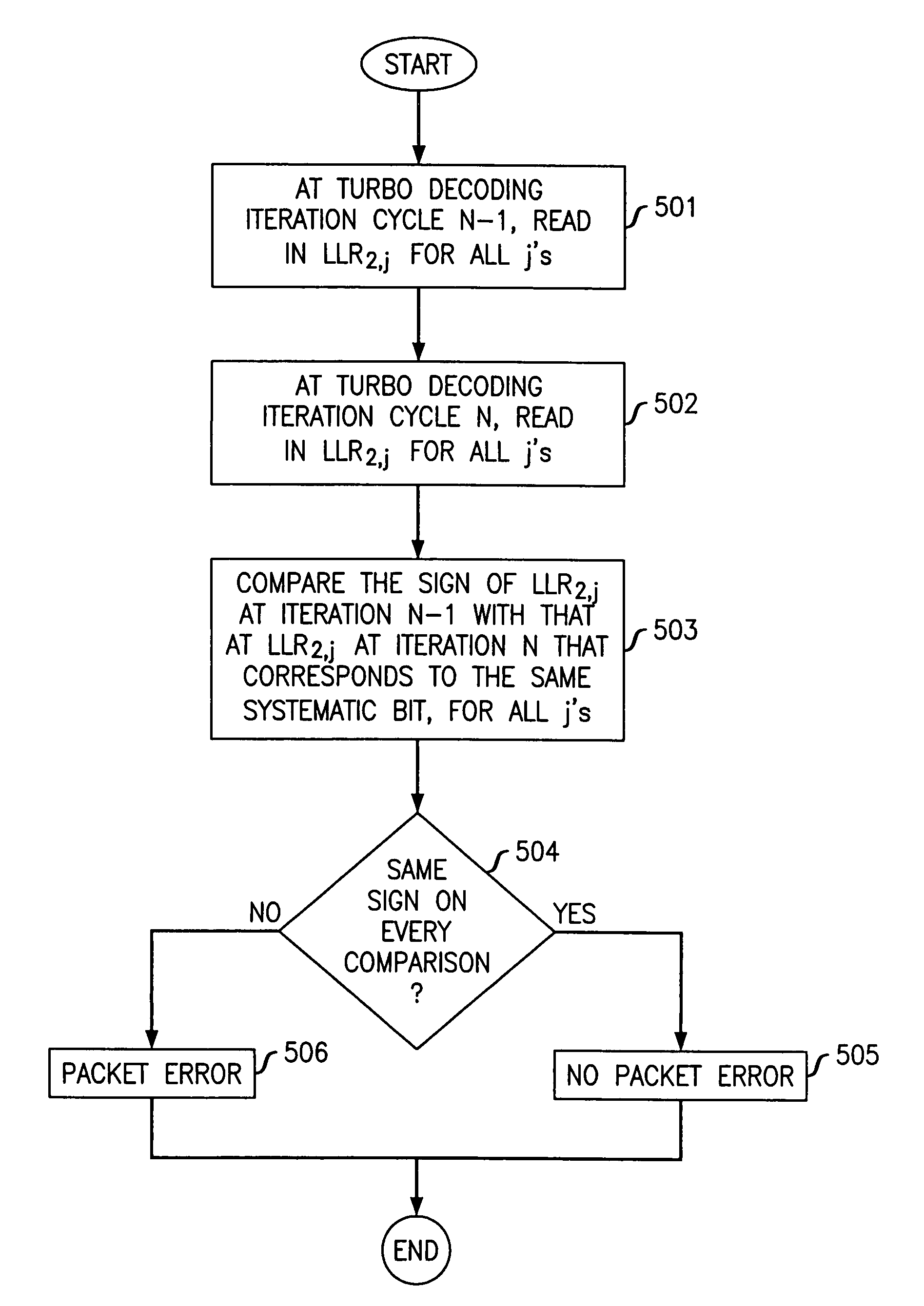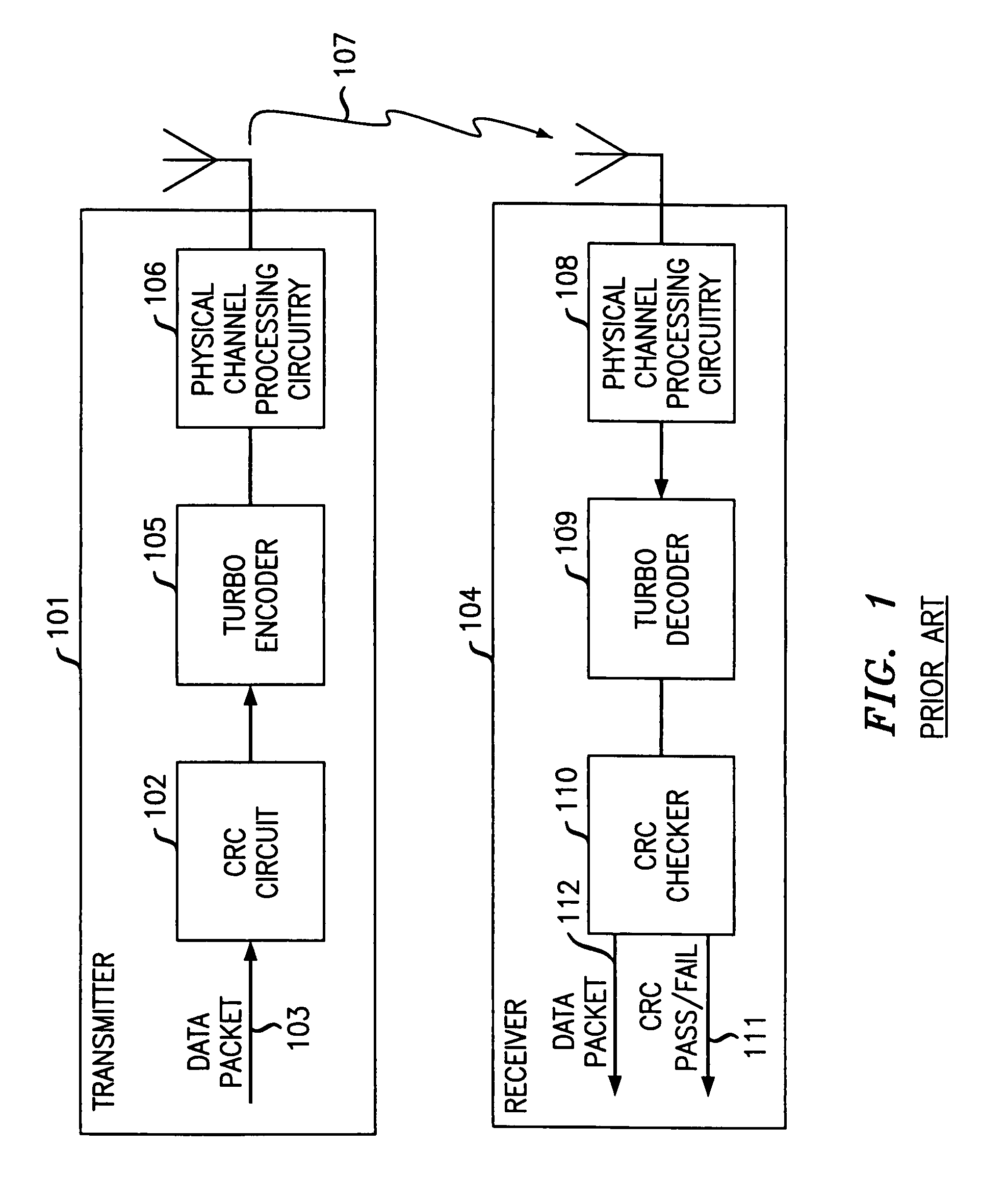Method and apparatus for detecting a packet error in a wireless communications system with minimum overhead using embedded error detection capability of turbo code
a wireless communication system and error detection technology, applied in the field of wireless communication, can solve problems such as large overhead
- Summary
- Abstract
- Description
- Claims
- Application Information
AI Technical Summary
Benefits of technology
Problems solved by technology
Method used
Image
Examples
first embodiment
[0024]The inventors herein have realized that since the two constituent codes share the same systematic bits, that one code can serve as the parity check for the other. In a first embodiment, at the end of the nth turbo decoding iteration cycle, for each systematic bit, the bit value indicated by the sign of the LLR produced by one constituent decoder is compared with the bit value indicated by the sign of the LLR produced by the other constituent decoder for a corresponding systematic bit. If the signs and thus decoded bits agree for each comparison, then the decision is made that no packet error has occurred. Otherwise, a decision is made that a packet error has occurred.
[0025]FIG. 4 illustrates the steps of this first embodiment. At step 401, at the end of the nth turbo decoding iteration cycle, LLR1,j is read in for each j=1 to j=K. At step 402, these LLRs are interleaved so that they each are aligned with a corresponding systematic bit associated with LLR2,j. At step 403, for e...
second embodiment
[0026]FIG. 5 shows the present invention in which the bits that would be decoded from the signs of the LLRs generated by the second constituent decoder at the end of a turbo decoding iterative cycle are compared with the bits that would be decoded from the signs of the LLRs generated by the same second decoder at the end of the previous tulrbo decoding iterative cycle. If the signs associated with each LLR is not the same, then the decoding is likely not converging with high probability and the decoded sequence is in error. In this embodiment, at step 501, at the (n−1)th turbo iteration cycle, LLR2,j is read in for all j=1 to j=K. At step 502, at the nth turbo decoding iteration cycle, LLR2,j is read in for all j=1 to j=K. Since the LLRs for the same j correspond to the same systematic bit, no de-interleaving is necessary. At step 503, the sign of LLR2,j at the (n−1)th iteration is compared with the sign of LLR2,j at the nth iteration cycle for each j. At step 504, a determination i...
PUM
 Login to View More
Login to View More Abstract
Description
Claims
Application Information
 Login to View More
Login to View More - R&D
- Intellectual Property
- Life Sciences
- Materials
- Tech Scout
- Unparalleled Data Quality
- Higher Quality Content
- 60% Fewer Hallucinations
Browse by: Latest US Patents, China's latest patents, Technical Efficacy Thesaurus, Application Domain, Technology Topic, Popular Technical Reports.
© 2025 PatSnap. All rights reserved.Legal|Privacy policy|Modern Slavery Act Transparency Statement|Sitemap|About US| Contact US: help@patsnap.com



